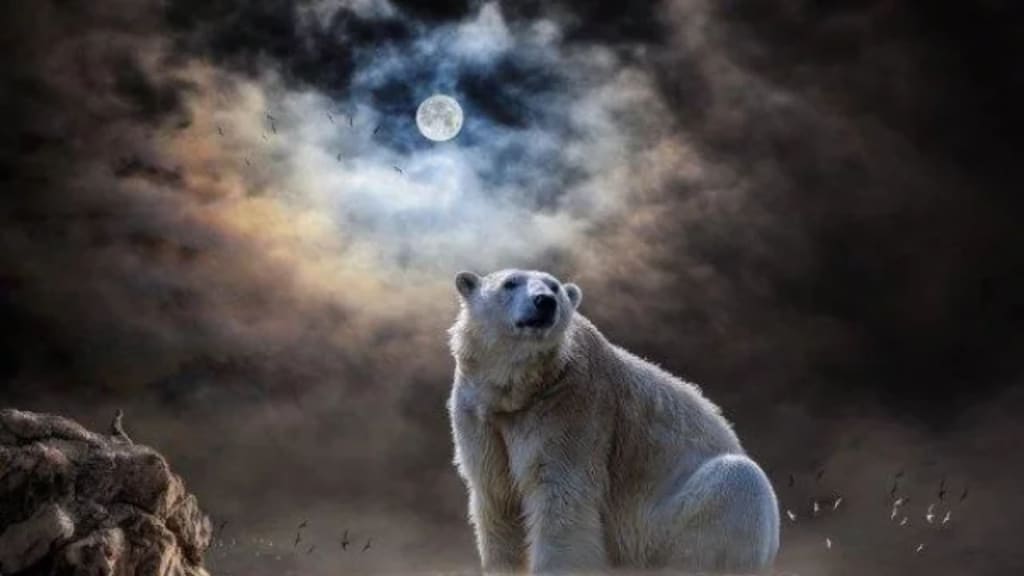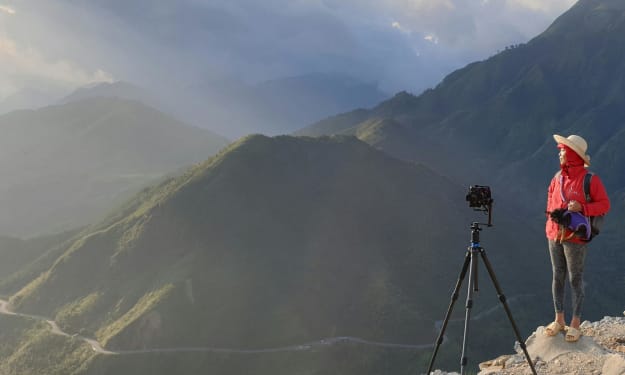Content warning
This story may contain sensitive material or discuss topics that some readers may find distressing. Reader discretion is advised. The views and opinions expressed in this story are those of the author and do not necessarily reflect the official policy or position of Vocal.
Polar bears are the least of our problems when it comes to climate change?
Polar bears are the least of our problems when it comes to climate change'

How the endangered white warriors of the Arctic are heralding the cataclysm
Polar bears have captured the human imagination for thousands of years. They are the largest land carnivores in the world of the bear family and hence, they sit at the top of the food chain in the biologically rich Arctic.
They are marine mammals, and spend much of their time on Arctic sea ice. Many adaptation processes make polar bears uniquely suited to life in the icy habitats. They are distributed throughout the Arctic region in 19 subpopulations. Polar bears were once hunted for their fur and meat, but loss of habitat due to climate change is now the biggest threat to these great ice warriors.
Impact of climate change on polar bears
To date, climate change due to global warming has been most pronounced in the Arctic. So, polar bear’s dependence on Arctic makes them highly vulnerable to the changing climate. In 2006 the polar bear was categorized as being vulnerable (VU) on the IUCN’s (the World Conservation Union) Red List.
With the summer sea ice decreasing, the bears must walk longer distances to stay within the receding ice. Regrettably, this brings them and humans into greater conflict in coastal communities and leads to malnutrition for the bears, especially for mothers with cubs.
Furthermore, a low reproduction rate and a long generation time means that this species is poorly equipped for tackling rapid climate changes in the Arctic.
Climate change and Polar bears
New YouGov research reveals climate change is considered the third most serious issue facing the world by the world's population, with a 12.8 percent share of concern—behind international terrorism (25.1 percent) and poverty, hunger and the lack of drinking water (15.2 percent).
There are enormous problems that the world today facing, in spite of such things polar bears should be the least of our concerns, even a Truman Scholar Emily Calandrelli said “In the grand scheme of things, polar bears are the least of our problems when it comes to climate change.”
The caveat of ignoring the polar bears
Grievously, the world today underestimated the value of this great species. The habitat of polar bears (i.e. the Arctic), is among the 12 percent of the earth’s permanent ice caps, and, melting of this region is the only threat of their destruction.
Thus, polar bears are known as an ‘indicator species’ meaning the overall health of the species reflects the health of the environment. The Arctic regulate the global temperature as it is an icy sea surrounded by land which acts as a huge white reflector at the top of the planet, bouncing some of the sun’s rays back into space, helping keep the Earth at an even temperature.
This region has warmed over the past few decades, actually about twice as much as the global average. As the sea ice melts there is less to reflect the rays back, and more heat is absorbed by the ocean—magnifying the warming effect. It also helps circulate the world's ocean currents, moving cold and warm water around the globe. Temperatures vary from -60°C to +30°C (occasionally even hotter), and as a result, the sea ice during the summer months is declining.
Furthermore, as the Arctic sea ice melts, the influx of freshwater from the melting ice is making seawater at high latitudes less salty and less dense. As a consequence, it will not be able to sink and circulate through the deep ocean as it does currently. If this trend continues, it would also be the harbinger of many adverse impacts, such as, ocean acidification, deforestation, and many other which are yet very difficult to predict.
Scientists predict that there may be virtually no summer sea ice in the Arctic within a generation. The extent of Arctic sea ice, which melts to its low each September, has steadily declined over the past three decades. Consequently, the extinction of polar bears would indicate the sea ice has disappeared, and would indicate what is happening to the Arctic environment.
How protecting this magnificent creature can help tackle climate change?
Climate change remains an issue of widespread political debate, often split along party political lines, especially in the United States. The president of the country, Donald Trump once mentioned that “Climate Change scientists have political agenda!” This has also altered attitudes further and led to number of climate change deniers to proliferate.
The indicator species play a huge role to raise global awareness evidently. February 27th is the International Polar Bear Day which is organized to raise awareness about the impact of climate change and reduced sea ice on polar bear populations. The day encourages people to find ways to reduce their carbon output—encouraging people to install energy efficient insulation in houses and to turning down thermostats by two degrees in order to reduce our climate impact.
February 2nd marks the start of the 2018 Biennial Meeting of the Parties to the five polar bear Range States in Fairbanks, Alaska, more than 40 years since the countries first came together to recognize their joint role in polar bear conservation. During that period, polar bears living in Canada, the Kingdom of Denmark, Norway, the Russian Federation and the United States have been exposed to two major threats: unregulated hunting before 1973 and loss of sea ice habitat due to climate change afterwards.
While polar bears are recovering from overhunting, the threat of climate change increases. Without urgent action to reduce greenhouse gas emissions, scientists predict we will lose a third of the world’s polar bears by 2050. So, if this “International Polar Bear Day” is introduced and celebrated worldwide, climate change may actually result at a slower pace than now.
Climate change is a natural phenomenon, and it is inevitable. It’s the anthropogenic factors which made this phenomenon extremely vulnerable for the life on earth. As climate change is perceptible in the Arctic the most, the increase of the polar bear population will indicate a better environmental condition of the region and in extension, for the world outside!
#Climate Change #Deforestation
Thanks All 🥰❣️ And Please 🙏 Subscribe
About the Creator
Angel Malaika
hi i am angel malaika🤞 i love to write especially about technology i love to write in class i am 18 yrs old i have failed in school everyone please pray for me and subscribe my account and my posts friends Thank you all for sharing ❤️❣️
Enjoyed the story? Support the Creator.
Subscribe for free to receive all their stories in your feed. You could also pledge your support or give them a one-off tip, letting them know you appreciate their work.






Comments (1)
Interesting to read.